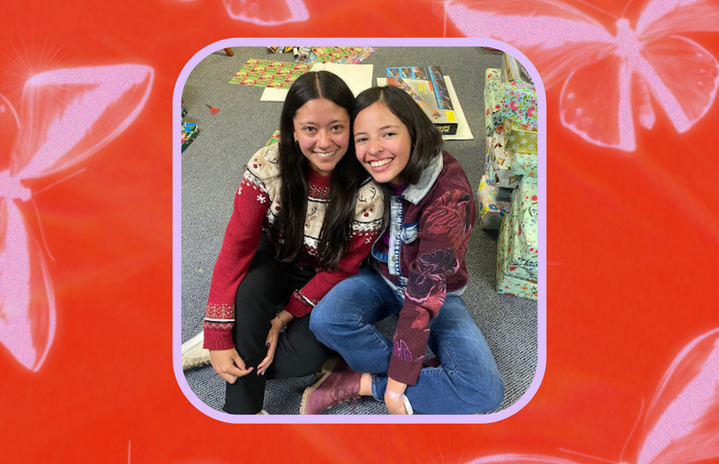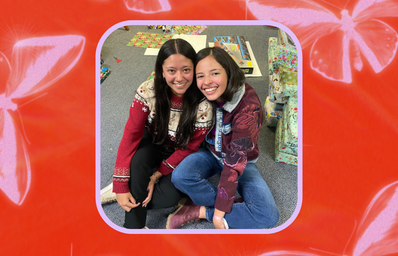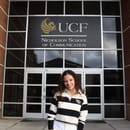Going back home for the holidays can be challenging, especially if you live far from home in another country. As an international student at the University of Central Florida, I am originally from Colombia, a country located on the northernmost end of South America. I used to live in Cota, a town close to the capital city, Bogotá.
Colombia has a wide range of traditions, and the culture is so diverse in art, music, and gastronomy, according to the Ministry of Industry and Commerce of Colombia. After a busy fall semester, as a journalism student, I returned to Bogotá and Cota to celebrate the holidays with my family. When I got off the plane, I was happy to see my parents, but I was also worried about the culture shock I would have after living in the U.S. for almost one year.
For the Christmas season, we have multiple traditions. Engaging in each of them, I had to confront how things had changed over the past year, but I was also glad to participate in these customs with my family.
Prayers
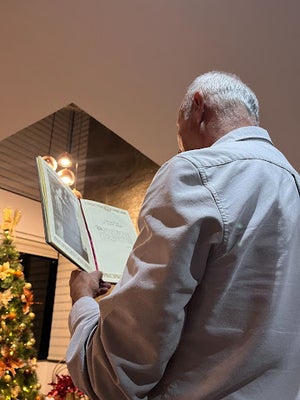
The best-known Christmas tradition in Colombia is called “Novena de Aguinaldos.” According to NPR, “novena” (which means “ninth”) refers to a nine-day prayer period leading up to Christmas Day. These “novenas” start on Dec. 16 and go until Dec. 24.
There is a book, that almost every Colombian family has, that contains verses to pray to show gratitude for the year, to pray for the world, and the wellness of the families. The prayers are to show devotion and prepare for the arrival of Jesus and then celebrate his birth on Christmas. Also, we do fun activities, like eating typical Colombian food, dancing, and singing Christmas carols. I was so happy to remember my roots and follow the familiar traditions to embrace my culture.
After some days home, I was so excited for the novenas. My mom and I were planning one to celebrate my dad’s birthday. A person reads aloud one prayer from the book and then passes the book to another person to read the other prayer, and they continue to pass the book in a circle until we finish all the verses.
I was apprehensive about reading aloud because of the complex and formal Spanish of the prayers in the book. This was my first brush with culture shock. Even though my first language is Spanish, sometimes I think in English and then talk in Spanish, or vice versa. I often end up translating things into English because I’m not able to find the right word in Spanish.
Thankfully, this time I got it right. I pronounced the words properly, I was not confused with what I was reading, and my family understood what I was saying.
Christmas food
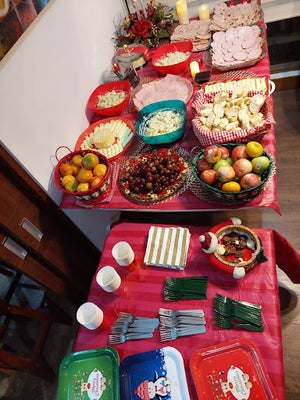
In Colombia, we like Christmas-decorated cookies like in the U.S., but we usually eat buñuelos and natilla. Buñuelos are corn and cheese-fried balls and natilla is similar to a cake that is usually served with mulberry sauce. When I was eight years old, I used to prepare natilla with my grandmother. We also eat a lot of ham and potato salad.
Dancing
Although we love “Jingle Bell Rock,” we usually dance merengue, cumbia, salsa, and tropical music. It is one of the best experiences because I dance with my grandmother, cousins, and parents, and have a fun time learning new steps.
The first week I arrived, I practiced choreography with my mom for songs such as “Cariñito (darling)” by Rodolfo Aicardi and Los Hispanos. On day one of the novenas, I was ready with my steps. However, it didn’t end well because my uncles decided to play llanero music. The dance style for this music is the joropo, which requires a fast pace and intense footwork, according to the Smithsonian Institution’s Folkways Magazine.
The first thought that came to mind was, “Oh my god, I am Colombian and I don’t know how to dance the joropo.” It was frustrating at first, but my aunt Nancy appeared and taught my cousins and me the basic steps while my uncles were playing. Even though I was concerned at first because of the culture shock, it was a great time to watch some steps, create choreographies, and learn from my mother and aunt.
Christmas music
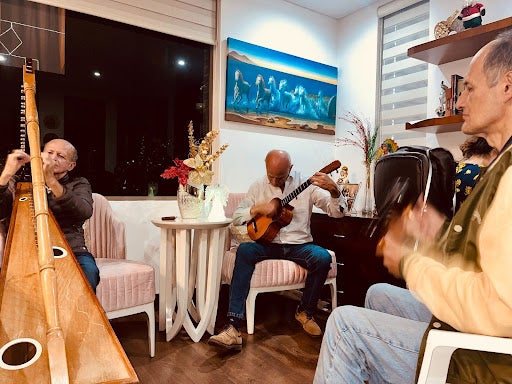
In Colombia, we also have Christmas carols such as “El Burrito Sabanero,” which is about a donkey who is traveling to Belén to visit the newborn Jesus. After we finish praying, we sing carols and play with maracas, tambourines, and other instruments. My uncles and my dad have a band where they play llanero music with harps, guitars, and maracas while my cousins and I sing.
I’ve been singing these songs with my cousins since I was five years old, but I didn’t remember the lyrics of some of the songs. When I looked them up online, they were not available. I tried to follow the pace and imitate the words and the sounds, but it didn’t work out.
Feeling distanced from my childhood, when it came so naturally to me, I said to my dad, “How is it possible that I don’t remember how to sing them?” My dad proposed to create a songbook with all the lyrics of all the songs they play during the December season so I can practice and bring them up to my memory.
It is incredible to see how traditions are part of your roots and who you are. LThe aura who left Colombia last December is different from the Laura who is here this December. My lifestyle in the U.S. taught me to be independent and confident. After living by myself for a year, I learned how to organize my time, study, work part-time, be part of student organizations like Her Campus at UCF, and meet incredible people from all around the world.
I am still reconnecting with these traditions to remember who I was, and who I am, and reflect on who I want to be. After almost one year of living in the U.S., I am proud to say that I am Colombian. We have valuable traditions, good food, incredible music, and a beautiful culture, and I have a great family who has supported me through this huge cultural adjustment.
